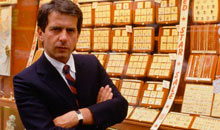By Lynda Russell-Whitaker
“There are those who would misteach us that to stick in a rut is consistency – and a virtue; and that to climb out of that rut is inconsistency – and a vice” Mark Twain, Consistency speech, 1887
In this article I argue the value of consistency. I’m certainly not advocating that you ‘stick in a rut’, rather that you ensure, in particular, that the messages you deliver to your audiences are consistent with what you are providing – or intending to provide – to your clients, whether products or services.
The kind of ‘consistency’ Mark Twain is referring to above is of not being willing or able to evolve or adapt. That is certainly something I would never advocate. On the contrary, I agree with marketing guru Seth Godin’s view as stated in his blog “Inconsistency = Opportunity”:
“The nuances that define individual choices and allow us to rationalize our personal inconsistencies also define opportunities for product and service differentiation. Understanding the customer goals that drive these nuanced variations in customer posture can lead to the identification of new market segments.”
Furthermore, to be agile and adaptable allows you to “embrace and respond constructively to your clients’ inconsistencies”.
No, I’m interested in the ‘consistency’ as defined in the dictionary as: ‘agreement or logical coherence among things or parts’.
I’m particularly interested in consistency with regard to the messages we put out into the world and what we deliver to our clients or customers.
However, consistency is also important in the quality of products and services that you deliver over time. It clearly shows reliability; clients can count on you to provide the same level of quality time and time again.
That quality has to be consistently high to maintain the integrity of your brand.
Marks & Spencer (M&S) were a great example of this kind of brand; well-known for their consistency of quality in the 80s, it set them apart from their competition. You could walk into a branch of M&S in Manchester and get exactly the same quality of food products as you would in Brighton. They were the market leader for decades.
Following defined processes can be valuable and helps audiences, clients and customers. This doesn’t mean that evolution and flexibility aren’t also valuable. Rather that you employ rigour not only with the messages you express to the world but also in the development and delivery of your products and services, to a consistent high quality. Proving in turn your reliability.
A brilliant and now famous example of the consistency of message and product backfiring in the extreme is that of Gerald Ratner’s speech to the IoD (Institute of Directors) Annual Convention, April 1991.
In the body of his speech he made a joke about how a prawn sandwich lasted longer than the popular earrings that they sold. This got a good laugh.

He then added a second joke about a time when he had been asked how he could sell a cut-glass sherry decanters and glasses set along with a silver-plated tray so cheaply, at £4.95, Gerald Ratner had retorted “because it’s total crap”.
In that message he committed commercial suicide.

Although supposed to have been in jest, and at a private (albeit very large) function, journalists had been invited, and they were delighted with what he said.
The following day his words were splashed across the front page of The Daily Mirror and Ratners’ customers rapidly voted with their feet.
Equally rapidly, the company wiped £500 million of its value and Ratner was forced to resign as CEO the following year. Subsequent business gaffes in the same vein are labelled ‘Doing a Ratner’!
Your audience, whether influencers or your clients and customers, are paying attention to your messaging and will expect this to be consistent with your offering.
This is more important than ever, given the ubiquity of websites and the social media channels used to promote your online and offline presence.
In a recent conversation with Brighton-based Twitter expert and strategist Wendy Kier, she asserted that consistency is the single most important factor in using this tool effectively for your business. In this context, she’s really talking about frequency and regularity.
It is really not much use to tweet in an ad hoc fashion if you want to increase business from your followers and win new clients. There has to be a regularity and consistency, although the content must be ever-changing to stay fresh.
They need to see consistency over a period of time in your tweeting habits. That doesn’t mean saying the same thing over and over again, but being clear in your messages and delivering on the promises of these with high quality products and services.
Rather than implying being stuck in a rut, consistency can convey a reliability that is reassuring and refreshing in times of uncertainty.
This sort of consistency of messaging, as opposed to the ‘stuck in a rut’ kind, can be as strong as a heart beat, keeping on going not just for months, but not ‘missing a beat’ for years and even decades.
Gerald Ratner has recovered from the shocks created by his speech in 1991, and has not only started two successful businesses since then, but has also written a book about it all.
As if to prove the point about consistency he has called his book “Rise and Fall… and Rise Again”. I expect it would be a good read, and a good Christmas present too.

